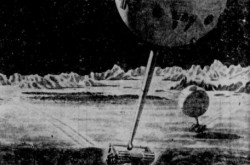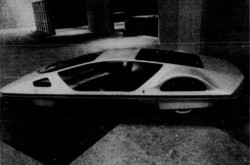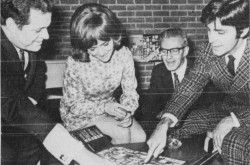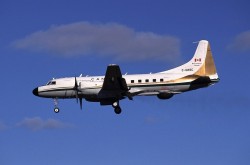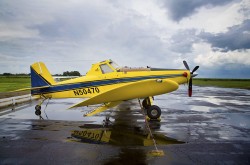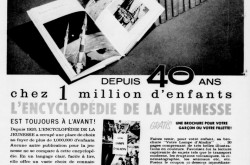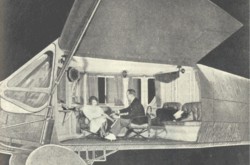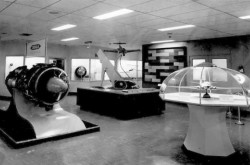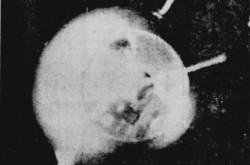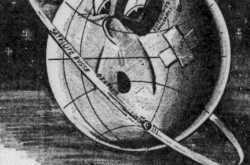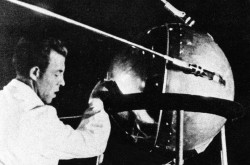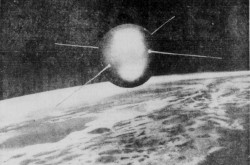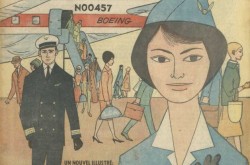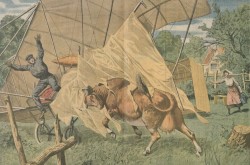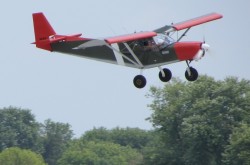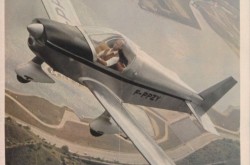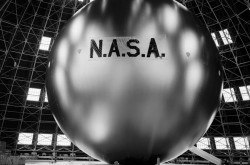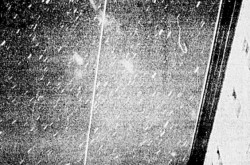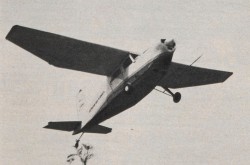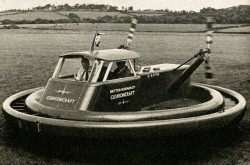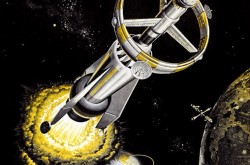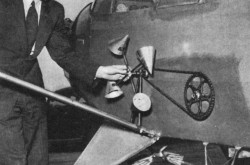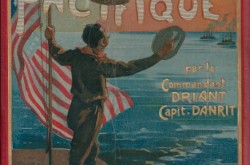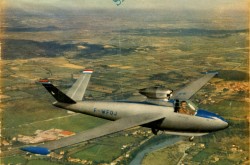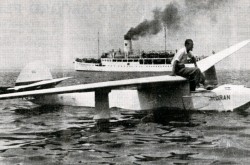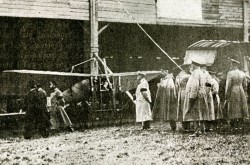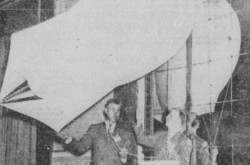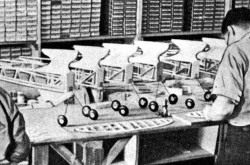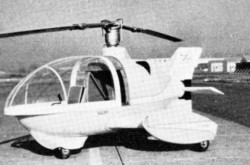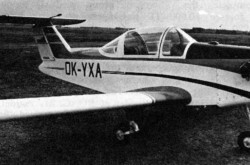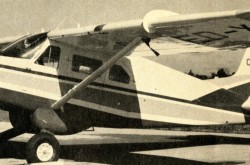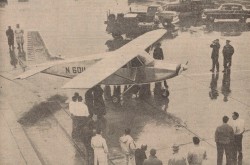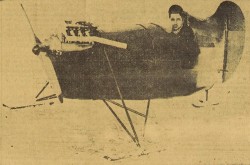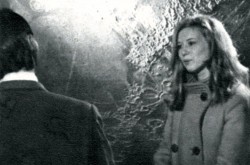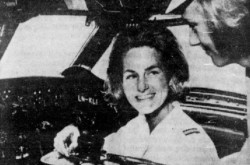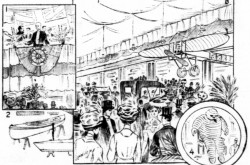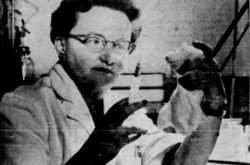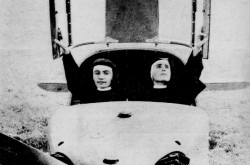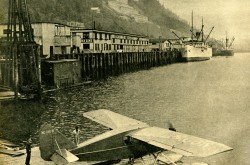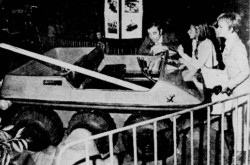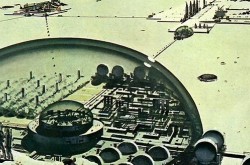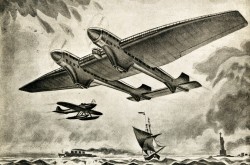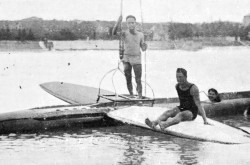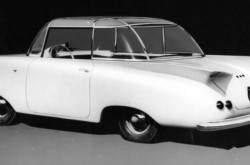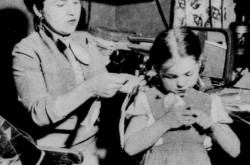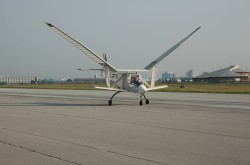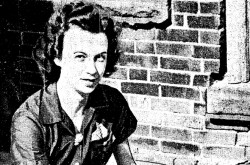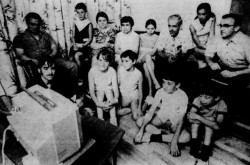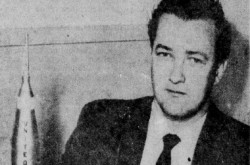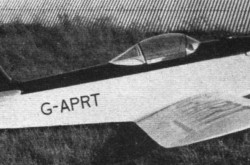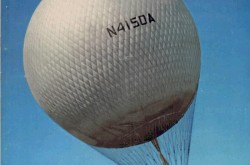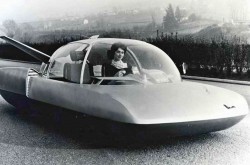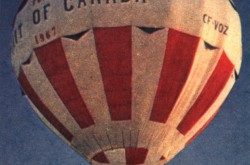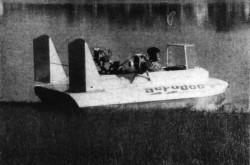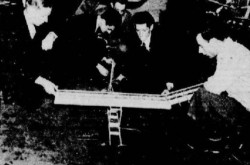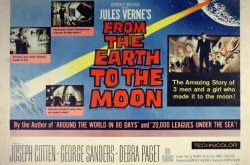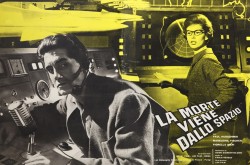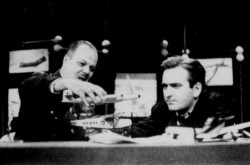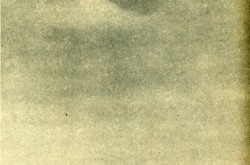“An Ottawa scientist makes a sacrifice for science:” The Canadian engineer and amateur astronomer James Hargreaves and his travels around the globe

Ave legit amicum, observati caelo te salutant. In other words, hail, my reading friend, those who are about to observe the sky salute you, I think. I never took Latin classes.
In any event, yours truly is pleased to welcome you to this astronomically interesting astronomical issue of our blog / bulletin / thingee, brought to you by Le Droit. By the 16 June 1951 issue of this one and only French language newspaper of Ottawa, Ontario, to be more precise.
I am of the opinion, and it is a very personal opinion, that the Canada Aviation and Space Museum, in Ottawa, should include astronomy as part of its mandate, at least in part. Astronomy is cool. It is, after all, the only form of time travel accessible to us at the moment and, in all likelihood, the only form of time travel Homo sapiens can be trusted with.
I mean, what you see in the night sky when you look at the stars is not star A or star B as they are now. Nay. You see them the way they were at some point in the past. Alpha Canis Majoris / Sirius, the brightest star in the northern sky, for example, is about 8.6 light years away. What you saw yesterday, or what you will see tomorrow, is Sirius the way it was 8.6 years ago, not too long before the Vogons, Romulans and Mandalorians destroyed it to make way for a hyperspace bypass, but I digress.
Our topic for today will be a most interesting individual, namely the Canadian engineer and amateur astronomer James Hargreaves.
Born in the United Kingdom in October 1899, Hargreaves was educated at the University of Cambridge in Cambridge, England. Even though he developed a keen interest in astronomy during his teenage years, this young man became an engineer.
This eclipse aficionado went on his first expedition in the 1920s. The event in question was the total solar eclipse which streaked across Australia on 21 September 1922.
Would you believe that astronomers hailing from 4 very different locations (United States, India, Canada and Australia) observed this eclipse from an isolated location in Western Australia? One of the members of Canadian team was none other than Clarence Augustus Chant, the one and only astronomer at the University of Toronto, in Toronto, Ontario, at the time – and a gentleman mentioned in April and July 2019 issues of our blog / bulletin/ thingee.
Better yet, would you believe that the observations made in September 1922 proved, as similar observations made in Africa and South America had done during the May 1919 total solar eclipse, that the light of faraway stars was bent, yes, yes, bent by the ginormous gravitational field of the Sun? In other words, the positions of stars A, B or Z on photographs taken either before or after the eclipse were not the same as the positions of these same stars on photographs taken during the eclipse. These mind blowing observations re-confirmed that Albert Einstein’s deeply controversial 1905 Theory of General Relativity was no fiction. It was fact.
Hargreaves seemingly saw his second total solar eclipse in 1923, on 10 September 1923 to be more precise. He had gone to Mexico to have the best view possible for his observations but the weather refused to cooperate.
Hargreaves immigrated to Canada around 1930 and settled in the village of Massawippi, Québec, where he raised pure bred cattle.
Yours truly has a feeling and it is just that, a feeling, that Hargreaves travelled somewhere in the 1920s or 1930s to observe and study one of the 38 or so total solar eclipses which took place between September 1923 and the onset of the Second World War, in September 1939. If I may be permitted to channel my inner Marvin the Martian, the absence of information on that magical mystery trip makes me very annoyed. Very annoyed indeed. Mind you, Hargreaves was probably annoyed as well. And yes, you guessed it, the weather did not cooperate.
In 1947, not too long after they moved to Ottawa, Hargreaves and his spouse, Mary Shiell Hargreaves, went to Araxa, a hapax legomenon / hapax and a city in Brazil well known for its health resort and spa, as private citizens, to study the total solar eclipse of 20 May. The clouds which obscured the sky parted only briefly during the event that some described as the longest total eclipse of the sun (4 minutes) observed on this Earth since, well, the first recorded observation 4 000 years ago. Hargreaves was not able to get good results.
If I may be permitted a comment, Hargreaves and a few other astronomers had taken for granted the statements of local dignitaries who had crowed about the fine weather of their city. Big mistake. To quote a Ferengi neighbour of mine, do not trust a man wearing a better suit than your own (47th rule of acquisition), and…
You do not know what a hapax legomenon is, do you? Sigh. A hapax legomenon is a word or expression which occurs only once in a text, in the works of an author or all the works written in a certain language.
If I may be permitted to derail yet again your train of thought, the journalist or astronomer who mentioned that the first recorded observation of an eclipse was about 4 000 years old may have been exaggerating a bit. The first Homo sapiens who put pen to paper or, in this case stylus to clay tablet, lived in the good and bad port city state of Ugarit, on the shores of the Mediterranean Sea, in what is now Syria. The total solar eclipse in question took place on 5 March 1223 before the Common Era – almost 3 250 years ago.
This being said (typed?), that same journalist or astronomer may also have been under exaggerating a bit. You see, spirals carved on stone monuments in Ireland may well represent the near total solar eclipse of 30 November 3340 before the Common Era – more than 5 350 years ago, but I digress.
And yes, we can calculate the date of an eclipse which took place more than 5 350 years ago, but go try and predict the weather the day after tomorrow.
And yes, my learned reading friend, Ousirmaâtrê Setepenrê, in other words octogenarian pharaoh Rameses II, was still the ruler of Egypt in 1223 before the Common Era, but you digress. Big time.
The only Canadian (and Commonwealth representative?) present in Brazil in May 1947, Hargreaves worked especially hard to accomplish some of the work the British team was supposed to do. Tragically, these people had perished in an airplane crash in Dakar, Afrique occidentale française, now in Sénégal, in February 1947, before they could even cross the Atlantic Ocean.
Interestingly, Hargreaves became an honorary Astronomy professor at the University of Ottawa, in Paris, France, sorry, sorry, in Ottawa, no later than 1950. Indeed, he may have moved to Ottawa to take up that position.
In the (late?) fall of 1951, Hargreaves left Canada with his spouse and adult son, Richard Hargreaves, and… What is it, my reading friend? Why am I busting your chops with a vacation trip, you ask? How wrong you are. This trip was no vacation, although I will admit it may have been quite exciting. You see, the Hargreaves were going to the Anglo-Egyptian Sudan, today’s Sudan, where Hargreaves hoped to study the total solar eclipse of 25 February 1952. He made the trip with a team from the University of Ottawa which included (amateur?) astronomer Charles C. Batchelder of London, Ontario, and his spouse, Katherine Batchelder.
This expedition lasted 7 months, or was it 9, from beginning to end. The eclipse, by comparison, lasted about 3 minutes. Weather conditions in the Anglo-Egyptian Sudan were near perfect, however, which was much appreciated by all. It looked as if Hargreaves’ spouse and son accompanied him to the isolated observation post. Given the unsettled political and social situation in the Anglo-Egyptian Sudan, this must have been a somewhat unsettling experience.
Canadian astronomers were not the only ones to make the trip. Teams from at least 5 other countries (France, Italy, Netherlands, United Kingdom and United States) travelled all the way to Africa.
At the time, Hargreaves was president of the Ottawa Centre of the Royal Astronomical Society of Canada.
Given that the University of Ottawa was not receiving any federal government assistance to help pay for its astronomical work, it could not provide any financial assistance to Hargreaves. As a result, in September 1951, our friend decided to sell his house (?!) to pay for the trip to the Sudan. This may well explain the fact that Hargreaves and his family moved back to Massawippi (in 1954?), where he resumed his cattle raising activities.
Hargreaves travelled to Oba, west of Kapuskasing, in northern Ontario, to observe and study the (total?) solar eclipse of 30 June 1954. As luck would have it, the sky was covered during the eclipse. Hargreaves’ spouse and daughter, Judith Hargreaves, having accompanied him, one has to wonder what they thought of the mosquitos.
It looks as if a Canadian team observed that eclipse from the relative comfort of a Royal Canadian Air Force Canadair North Star transport plane – a type represented in the shatteringly good collection of the Canada Aviation and Space Museum.
In February 1955, Hargreaves, still an honorary professor of Astronomy at the University of Ottawa, left his home in Massawippi, with his spouse, to go to Ceylon, today’s Sri Lanka, to observe and study what some described as the longest total solar eclipse (4 minutes?) observed on this Earth since 717 or 699 Common Era.
Did you know that the Sun was totally eclipsed for a mind blowing period of 7 minutes 15 or so seconds during the total solar eclipses of 3 June 699 and 13 June 717 Common Era? Apologies, I digress.
The Hargreaves, accompanied by the aforementioned Batchelders, made up the Canadian team which would observe this February 1955 solar eclipse, in the company of teams from at least 7 other countries (France, India, Japan, Netherlands, Switzerland, United Kingdom and United States). The Sinhalese government politely refused to allow a large Soviet team to enter the country.
Sadly, what most of these eager astronomers saw was not what they had hoped for. And yes, you guessed it, there were rain clouds in the heavens above the tea plantation where Hargreaves had set up his observation post. Only the Americans actually saw something from the observation post they had decided to pick, in the centre of the island of Ceylon.
An American engineer was able to obtain a far better vantage point to observe this celestial event. Indeed, Frank G. Back, the inventor of the Zoomar telephoto lens which revolutionised the presentation of sporting events on television, zoomed across the skies of the Philippines aboard a United States Air Force (USAF) Lockheed T-33 Silver Star jet powered advanced training aircraft – another type represented in the still shatteringly good collection of the Canada Aviation and Space Museum. This observation may, I repeat may, have been the first ever made in a jet aircraft.
Hargreaves retired from his (honorary?) teaching position at the University of Ottawa in the late 1950s or early 1960s.
Would you believe that he, his spouse and a female assistant travelled from Massawippi to the Northwest Territories-Yukon border by truck, thus covering a distance of about 5 075 kilometres (about 3 150 miles) to study the total solar eclipse of 20 July 1963? The terrific trio then had to hire a bushplane to reach a mountain top in the Yukon, where the other members of their small team would meet them. Incidentally, Hargreaves had designed and built some of the equipment used to make the observations, which were sponsored but not financed by the University of Ottawa. Indeed, why do you think the Hargreaves and the assistant travelled to the Yukon in a truck?
This being said (typed?), it looks as if the boss of the Canadian effort was Alexander R. “Alex” Stockwell, principal of Laurier Heights Elementary-Junior High School, in Edmonton, Alberta, amateur astronomer and secretary of the Edmonton Centre of the Royal Astronomical Society of Canada.
Sadly enough, the observations made by Hargreaves and his team did not prove completely successful. It rained the day of the eclipse.
And yes, had they chosen to go outside, with the proper safety equipment, the staff of the National Aviation Museum, as the Canada Aviation and Space Museum was called back then, might have seen a near total solar eclipse in July 1963 – provided the weather cooperated. Now that yours truly thinks about it, my parents might have done exactly the same.
Interestingly, an American astronomer, Charles Hugh Smiley, observed the July 1963 eclipse from the back seat of an example of the 2-seat operational training version of the Lockheed F-104 Starfighter supersonic interceptor of the USAF. I kid you not. And yes, you are quite right, the wonderful collection of the Canada Aviation and Space Museum includes a Starfighter.
Another American team made its observations from a somewhat more comfortable location, the cabin of a Douglas DC-8 jet-powered airliner. This particular sortie was sponsored by the world famous National Geographic Society and Douglas Aircraft Company Incorporated.
Canada and the United States were not the only countries whose astronomers observed the July 1963 eclipse. All in all, astronomers from 15 or so countries, among them Denmark, Italy, Japan, Netherlands, Switzerland and West Germany, observed this event.
One of the last, if not the last total solar eclipses Hargreaves was involved with took place on 12 November 1966. He and his spouse drove to Peru (!?), in South America (!?), with a female friend, in a truck converted into a camper.
Yours truly would like to state that Hargreaves observations went swimmingly but that would be inaccurate. All right, all right. Things went swimmingly. The weather was great. Jeez, what a grouch you are…
Even though he seemingly did not travel the world in search of eclipses after 1966, Hargreaves remained fascinated by the heavens. He left this world in November 1985, at age 86.
Be safe and be careful, my reading friend. If I may paraphrase Eddard Stark, the murdered patriarch of a decimated family of the television saga Game of Thrones, summer is coming.
As is the partial / annular solar eclipse of 10 June 2021.


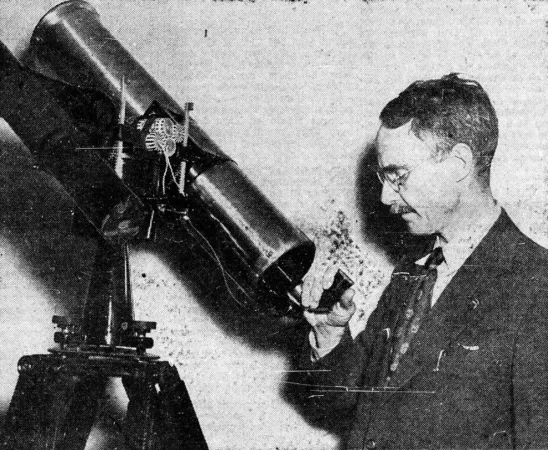


































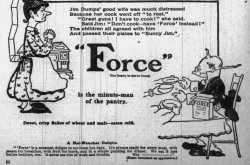


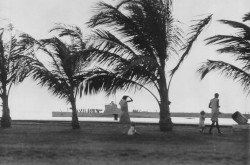
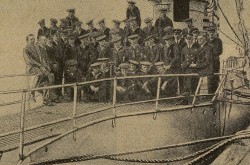
![A block of photographs showing some of the people involved in the bombing of beluga whales in the estuary and gulf of the St. Lawrence River. Anon., “La chasse aux marsouins [sic]. » Le Devoir, 15 August 1929, 6.](/sites/default/files/styles/thumbnail_7/public/2024-09/Le%20Devoir%2015%20aout%201929%20page%206.jpg?h=584f1d27&itok=TppdLItg)
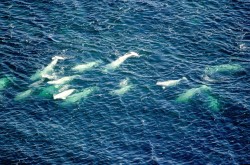
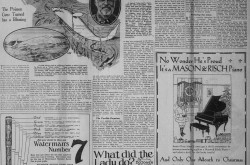
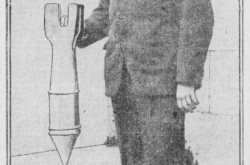


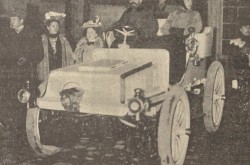



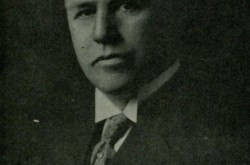
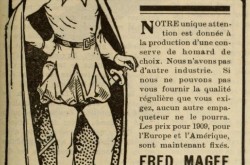
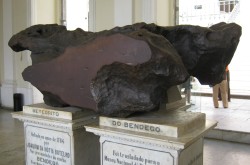
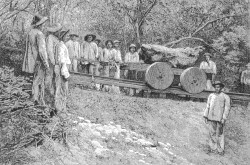
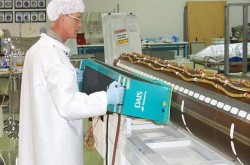
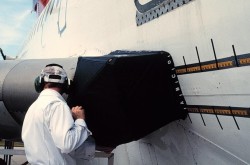
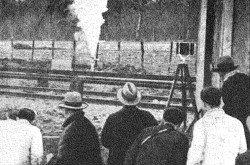
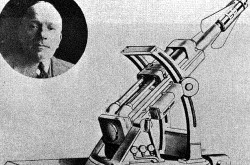


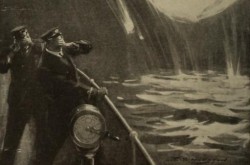
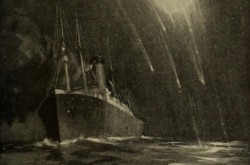

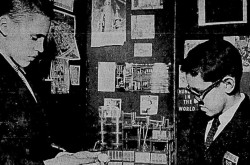
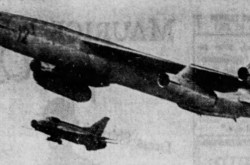
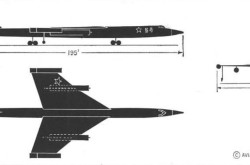
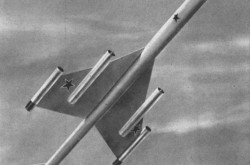
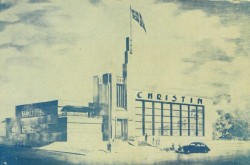


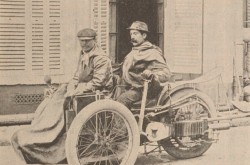
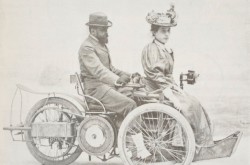
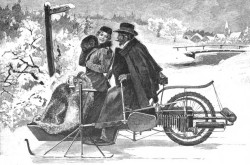

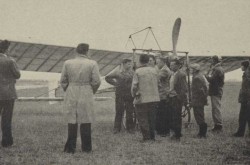
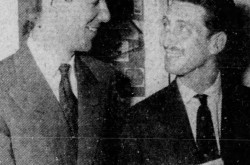

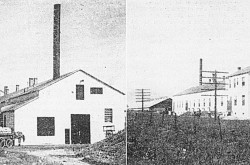
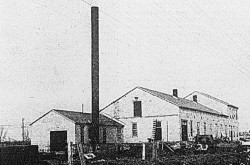
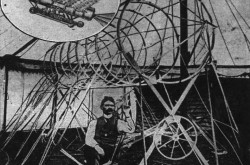
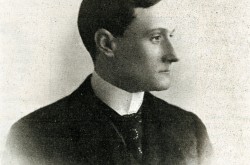
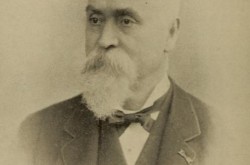
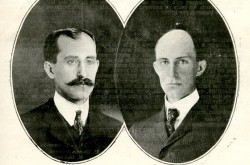
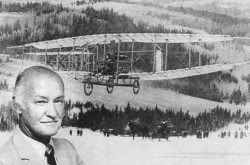
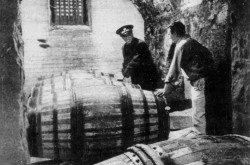
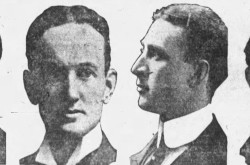

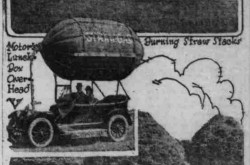
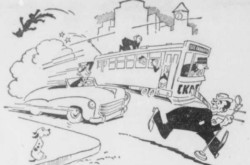

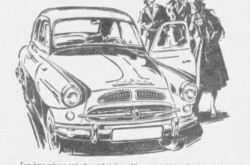
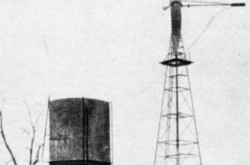
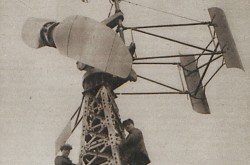
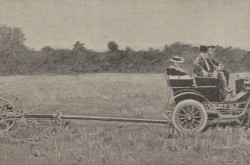
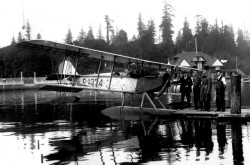
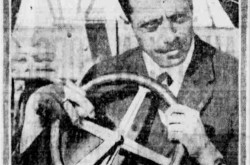
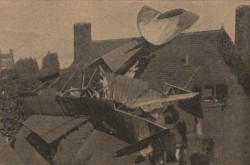
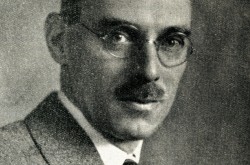


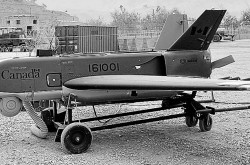




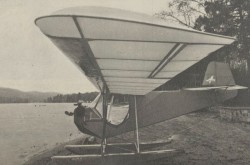
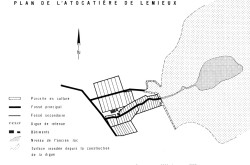
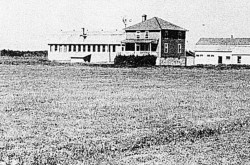
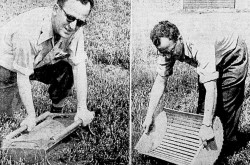

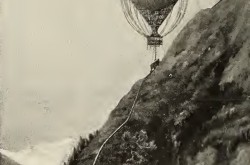


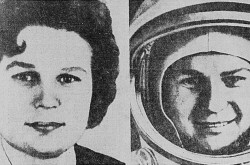
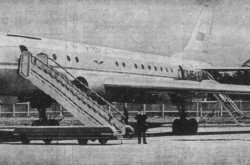
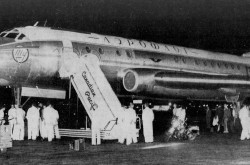

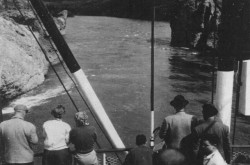
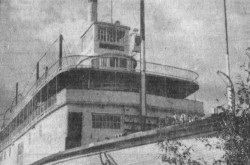


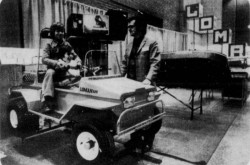
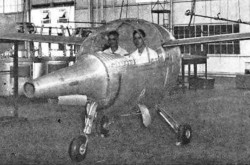
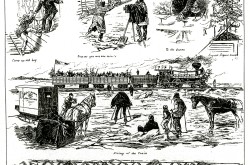
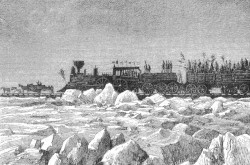


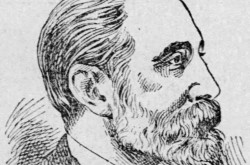

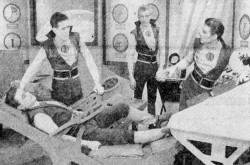
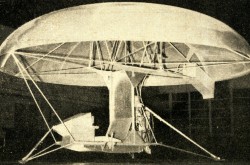
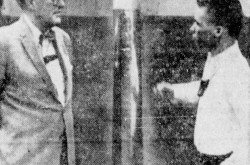


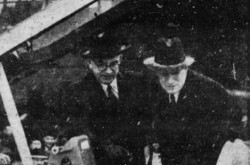
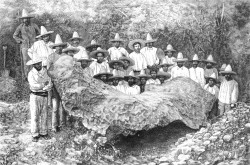

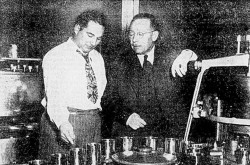
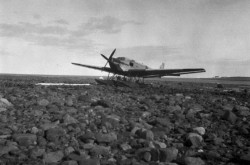
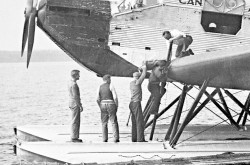
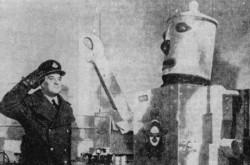
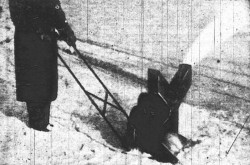
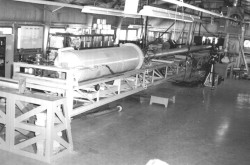

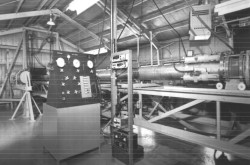



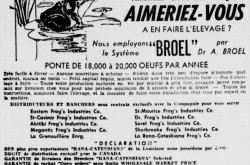
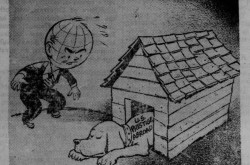
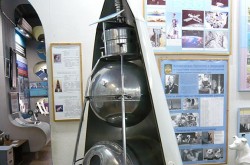


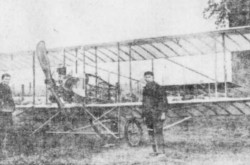

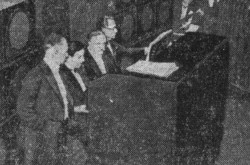

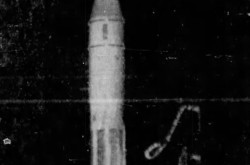
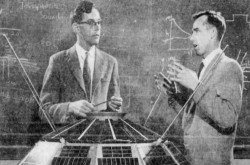
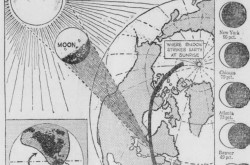
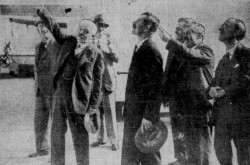
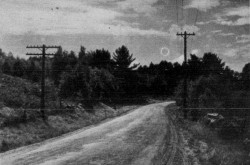
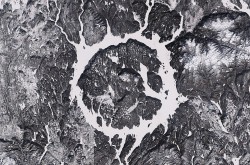
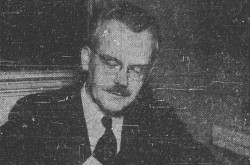
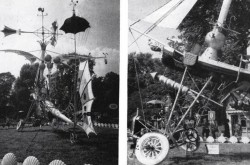

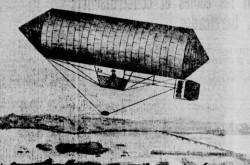

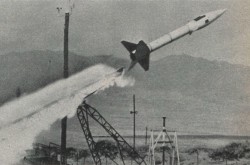
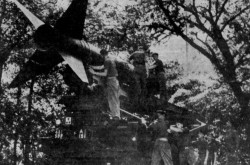

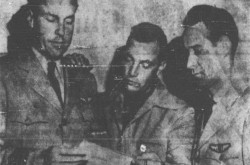


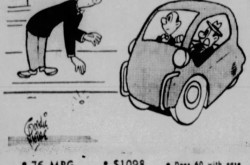
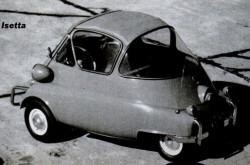
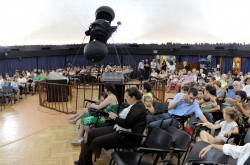
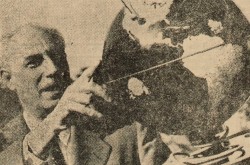






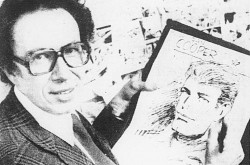



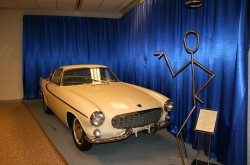
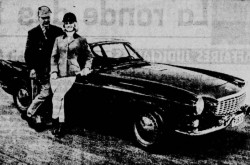
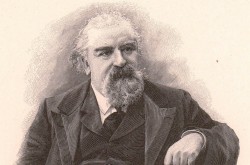
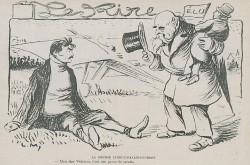
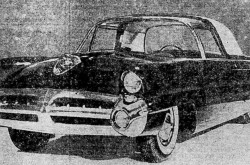
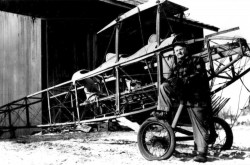

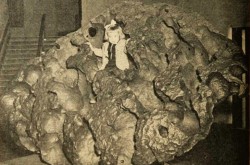
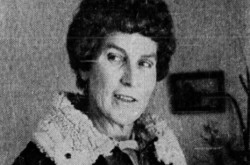
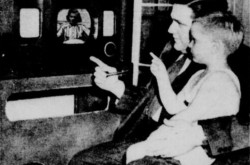
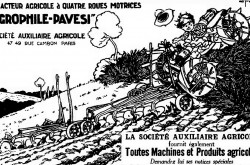

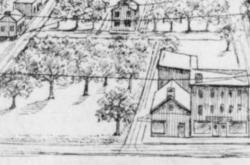



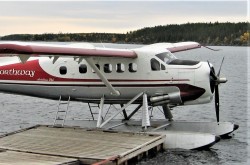




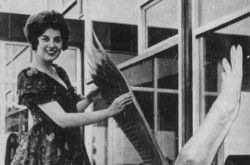
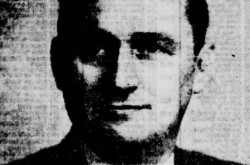

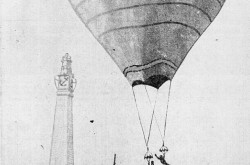

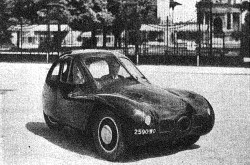




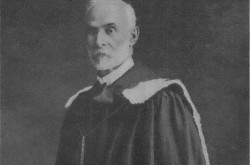


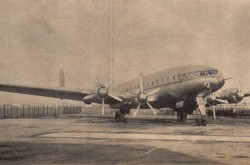
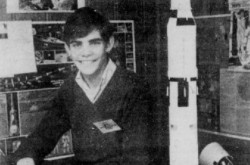



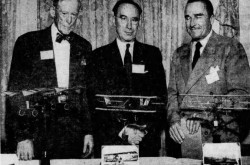

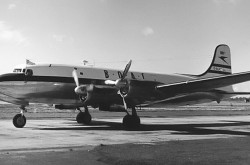
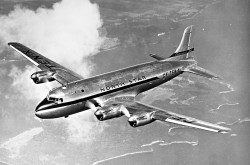
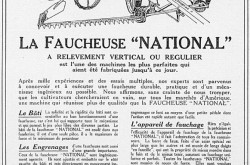
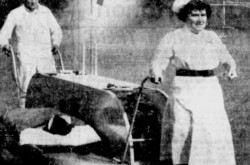
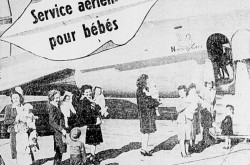


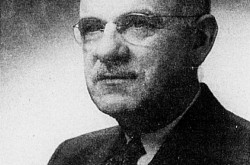

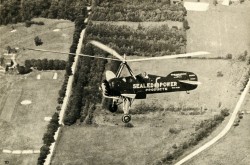
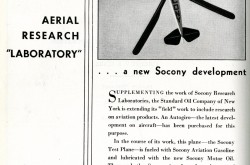

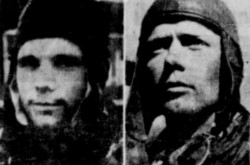

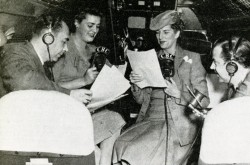
![Peter Müller at the controls [sic] of the Pedroplan, Berlin, Germany, March 1931. Anon., “Cologne contre Marseille – Le mystère du ‘Pédroplan.’ [sic]” Les Ailes, 2 April 1931, 14.](/sites/default/files/styles/thumbnail_7/public/2021-04/Les%20Ailes%202%20avril%201931%20version%20big.jpg?h=eafd0ed4&itok=WnBZ5gMf)
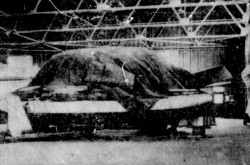
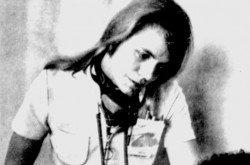

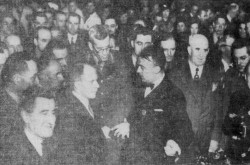

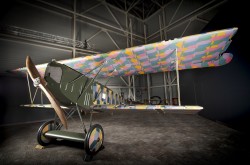

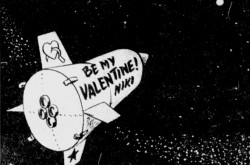
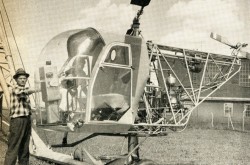
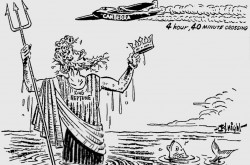

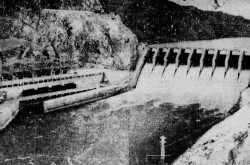
![One of the first de Havilland Canada Chipmunk imported to the United Kingdom. Anon., “De Havilland [Canada] DHC-1 ‘Chipmunk.’” Aviation Magazine, 1 January 1951, cover.](/sites/default/files/styles/thumbnail_7/public/2021-01/Aviation%20magazine%201er%20janvier%201951%20version%202.jpg?h=2f876e0f&itok=DM4JHe5C)

